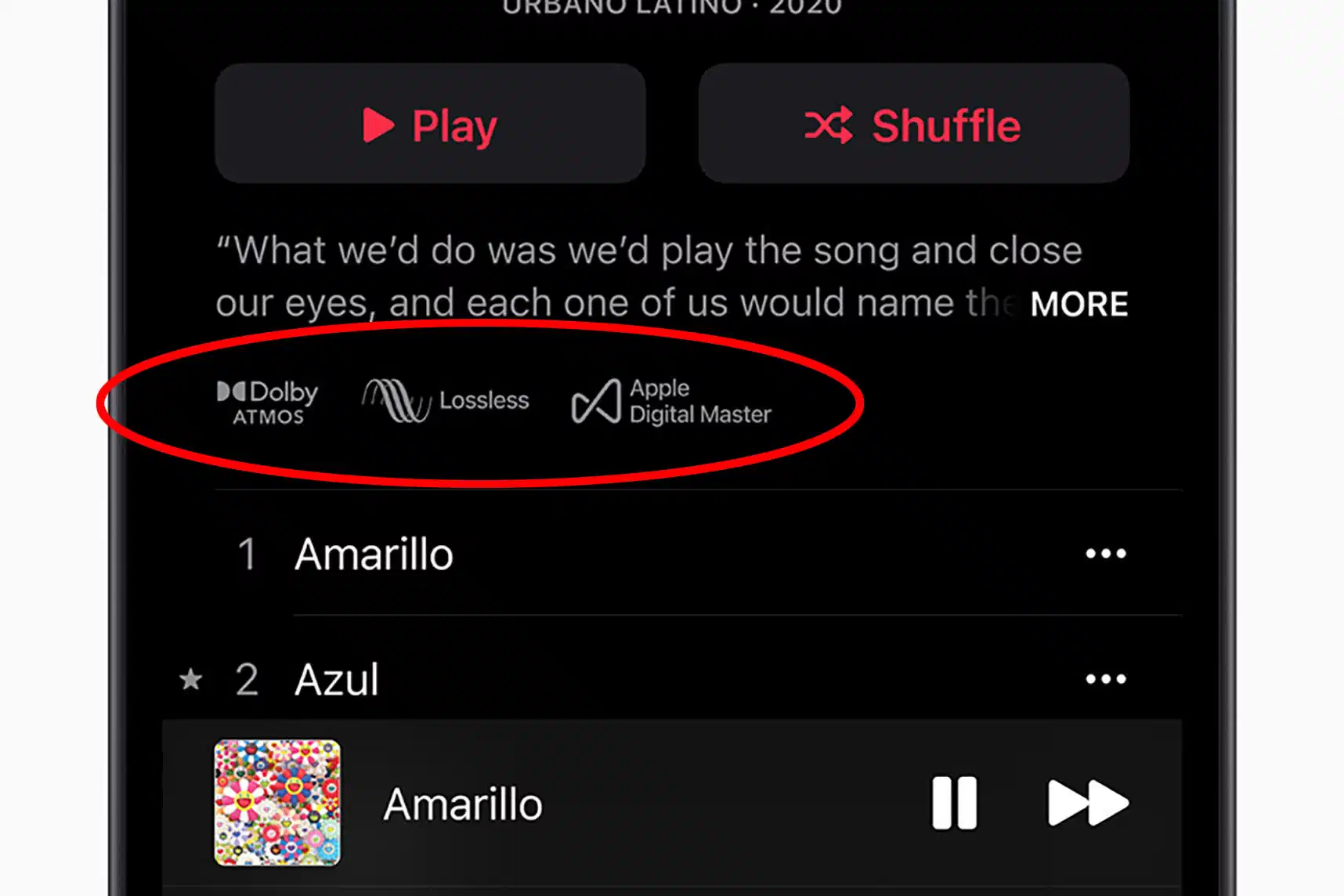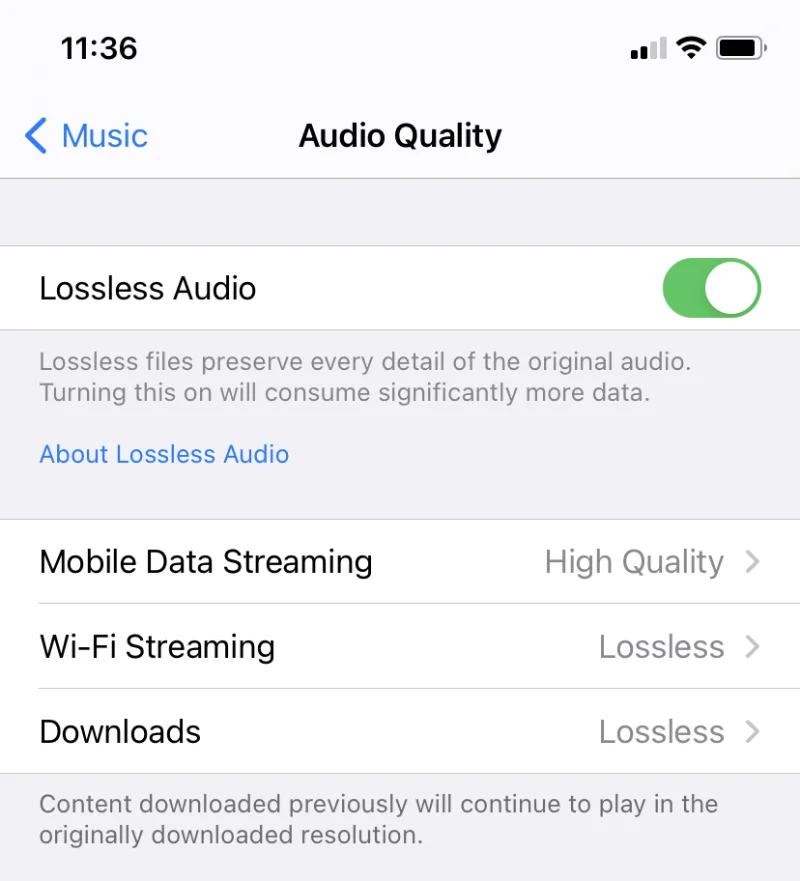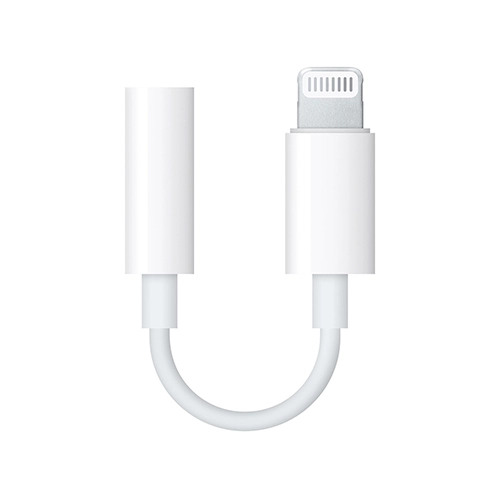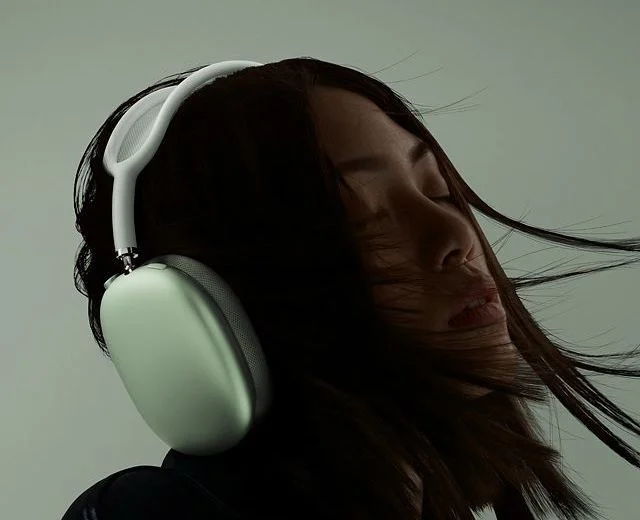On May 2021, Apple shake the music streaming game by announcing that the entire catalog will have two new major features: Dolby Atmos and Lossless for free. Lossless streaming has been available to competitors like Tidal for an extra fee but spatial audio is a brand new feature without any competition at the moment. Apple moves has change the game because competitors like Tidal and Spotify charge extra for ‘premium’ feature which forces them to rewrote their game plan. Spatial Audio is a completely new feature which at the moment there’s no answer from Apple Music competitors, although that will change soon since it is just a new recording standard which is very portable.
From the press release, Apple makes a bigger deal on spatial audio than lossless. However, there are a few details about how to use this lossless feature since there are a few restrictions with current implementation. This is a short guide in how to get the most out of Apple new feature.
What it is

Lossy Audio
Almost every popular music that you hear is made in a music studio. The performer will perform the song in the studio and it is recorded on a high quality recording medium like a Digital Audio Tape or Hard Drive which will take every detail that is heard in the studio. Some little harmonics of the voice or the tiss of the drum which will make your hair stand and skin all tingly.
Now, the software and hardware used to capture that information will have a very high bit rate that will consume a lot of space. Because of that, several evolving standard has been made to make it more portable. Just like how the electricity from the nearest power station has been “stepped-down” to make it more “consumable”, so does music. Music is step down in various standard to ensure things like a small portable player can play such music and more importantly for streaming services, it cost less to get music to your ears since a streamers major cost is bandwidth.
This is where the lossy audio standard comes in. Lossy audio standard works by eliminating most frequency that the normal human ear could not listen to, like a very high harmonics sound or a very low bass. It also change the sampling rate to a lower bit rate, which for most part, is unnoticeable from the original. This is because the human mind usually fill out the gaps between information and standards engineers make such gaps that is easily fill out by the brain.

The drawback of this method is that some information will be lost during the compression process. For most people who are using cheap headphones, this loss of information does not matter much. But if you are using high end equipment, the music clarity might be noticeable. I’m using the word might here because sometimes, we cannot perceive the difference and the target market of people using high-end equipment, their ears has loss the abilities to hear higher frequency sounds.
In Apple Music, Apple uses the AAC (Advance Audio Coding, not Apple Audio Codec) standard to deliver lossy music across the stream. This has been the standard that Apple has been using since the launch of iTune Music Store. With such standard, a typical song is only 1.5MB which theoretically can fit a 3.5" floppy drive (remember these?).
Lossless
Now this new feature that Apple Music launched is called lossless audio. It uses a different standard as AAC cannot do lossless audio. Apple uses its own standard called ALAC (Apple Lossless Audio Codec) to deliver lossless audio. There’s a few reason to do your own standard instead of using open standard like FLAC like you have more control of such standard. But at this moment, ALAC is open sourced and royalty-free. So theoretically, anybody can use the ALAC standard.
Although ALAC is a codec standard, it is put inside a container file format like m4a in Apple Music case. The reason for doing this is that m4a is an open standard and theoretically you can put any codec standard in the m4a file, as long the software or hardware support the codec. So its easier for Apple to send out ALAC or Atmos audio file using the same file format.
The term lossless comes because the algorithm to compress the audio data ensures that the compressed data can go back to uncompressed form without losing information in the compression process. For in lossy AAC example, the AAC file cannot be use to generate the original uncompressed audio data, while ALAC lossless data can.
Apple Music release two kinds of lossless standard, the lossless quality standard which is 24-bit/48kHz sampling rate and High Quality (HQ) lossless which is 24-bit/192kHz sampling rate. Now, the question is what does this numbers means? The first number, 24-bit, is the bit depth. In this example, for every sample rate, the audio info is represented by a 24-bit number or 16,777,216 possible values. This allows for a signal to noise ratio, the biggest difference between the signal and background noise, of 144.49dB, which is very, very loud. The second number like 48kHz or 192kHz is the sampling rate, which means how many times per second that the audio information is being samples. 48kHz means that in 1 second, 48,000 samples is collected. So 24-bit/48kHz means that for every second, 48,000 samples of audio information is recorded and each audio information is represented in a 24-bit number.

Comparison with other medium
Now lets compare the bit rate with other mediums including how recording studio actually take. Below is the medium and bit rate on selected mediums
| Medium | Bit & Sample Rate |
|---|---|
| Apple Music Lossless | 24-bit/48kHz |
| Apple Music HQ Lossless | 24-bit/192kHz |
| CD | 16-bit/44.1kHz |
| SACD | 1-bit/2.822MHz |
| DAT | 4-modes from 12-bit/32kHz to 16-bit/44kHz |
| Blu-Ray Audio | 24-bit/96kHz or 24-bit/192kHz |
| MQa | typically 24-bit/96kHz |
| ProTools | Up to 32-bit/192kHz; typically 24-bit/96kHz |
So Apple standard quality lossless audio already matched CD-quality audio but at a compressed size of around 60MB per album instead of 660MB per CD. ProTools, a software that is typically used in recording studio can sample a higher rate of 32-bit/192kHz but engineers typically records at 24-bit/96kHz to save space. And HQ lossless can handle most recording.
Spatial
Spatial audio is an audio format where information of where the sound came from in a 3D space is recorded. When played back, computational audio will recreate the sound as if the sound come from a certain direction. In music, one theoretically can re-arrange the band so with the right supported equipment like a AirPods Pro, you can feel like there’s a live band in front of you and you can hear individual instrument in a 3D space, just like a live recording.
For Apple Music, Apple employ the Dolby Atmos standard in Apple Music. Apple has ensured that all new hardware supports the Dolby Atmos Standard. Using computation audio chip like the H1, Dolby Atmos is playable on devices like AirPods Pro, the new iMac and also HomePod Mini.
Just like Dolby Surround needs to be encoded into a movie track, Dolby Atmos need to be encoded in the audio track to actually to have an effect. Of course, some audio track need to be remixed with Dolby Atmos for it to have an actual effect. Otherwise, the music track will sound like a typical stereo music. At launch, Apple managed to release dozens of track that has been remixed with Dolby Atmos.
How to enable them

To actually listen to lossless audio, you need to actually enable them in the settings. For iDevices like iPhone and iPad, you just need to go to Settings -> Music -> Audio Quality. For the macOS, you need to launch Music app, select Preferences -> Playback -> Audio Quality. Select the desired quality and you all set. For some cases where you did not get lossless quality, you need to turn the ‘Sync Library’ option off and on. For downloaded music, you need to delete the downloaded music and re-download the music in lossless form.
Note: Using higher quality audio takes up a lot more bandwidth than lossy format. So if your data plan is limited , it is recommended that you use the lossy format when on Mobile Data.
How to listen to lossless audio

For people who are wearing bluetooth headphones, you might not hear the difference. This is because bluetooth audio that Apple employed for its AirPods does not support lossless audio. This include the newly launched $549 AirPods Max. HomePod or HomePod Mini also cannot play lossless as the audio tracks are delivered via lossy AAC format. Apple promise a future software update to address this.
To play lossless music, you need a DAC (Digital-to-Analog Converter) device. The cheapest DAC device from Apple is the lighting to 3.5mm earphone jack that sells for around $9. However, it only allows to play up to normal quality 24-bit/48kHz loss audio. For HQ lossless audio, you need to get a third-party external DAC to play such files.
Worth it?
With additional cost of $0 to you Apple Music subscription, lossless audio and spatial audio is a great addition the Apple Music experience. Competitors will have to rewrite their game plan since most either charge extra or planning to provide it as an extra value service. That being said, you do need to have the right equipment to experience lossless audio quality. So the current line of AirPods will just not cut it at this point. Nevertheless, most users will not see the different in terms of experience since equipment play a part to get the moss out of lossless audio.
The way forward

Apple being a behemoth company, any move it makes will cause ripples in the market. By providing lossless audio free-of-charge, one can expect significant changes to streaming and wireless audio in the coming months. We expect that Apple will update their line of AirPods to support at least normal quality lossless audio.

Competitors will nevertheless have a dilemma. One of the biggest cost in streaming media is bandwidth cost. Streaming lossless audio incurs higher cost. Most of them don’t have the muscle like Apple to simply absorb bandwidth cost. Furthermore, Apple collects 30% “tax” for any transaction made on their App Store. One can cry anti-competitive behavior which is outside of the scope of this article. So other streamer provider will have a choice to make. Follow Apple or increase pricing. Both is something that streamers would not like.
